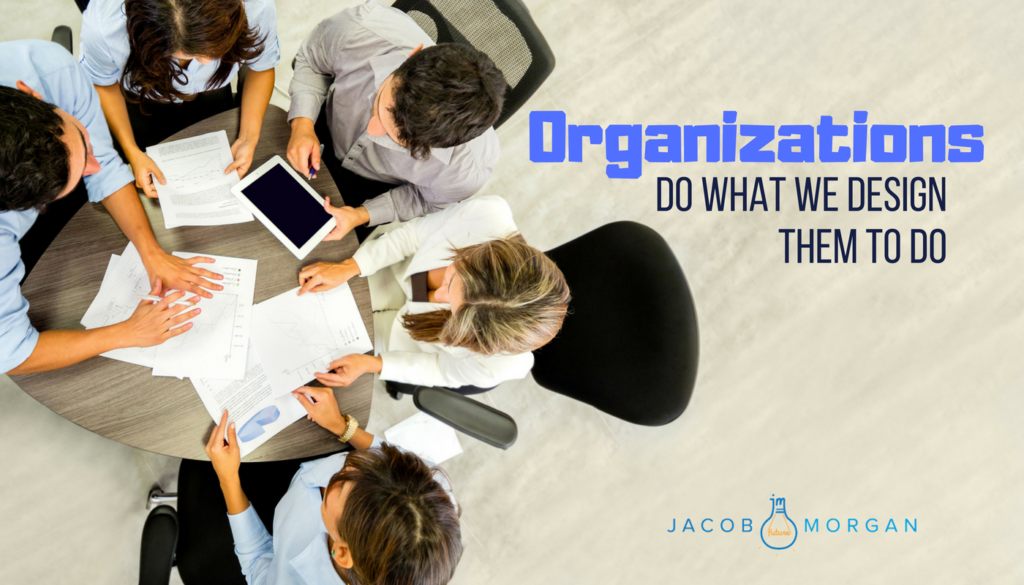
If you want a cake to be delicious, you follow a recipe and add lots of chocolate. If you want a cell phone to be able to communicate with other phones, you change its programming code and allow it to share information.
If there’s one thing humans are good at, it’s building things that do what they are supposed to do. From cars to engines, phones, and computers, we’ve been doing it throughout time—we design things, and those items do what they are intended to do.
The same is true for the organizations we design and build. We’re the ones who have created these systems, yet we get mad or surprised when they do exactly what we designed them to do.
Think about Kodak—the organization couldn’t change with the times and as new technology emerged, and it fell apart and died. The reason that happened is because the organization was built to resist change and to move slowly. Those characteristics helped Kodak hold on to its heritage until it was too late and the organization wasn’t capable of changing with the times.
If organizations fail, it isn’t just because it didn’t see the disruption coming, didn’t innovate fast enough, or couldn’t respond to customer demands. The real reason is that we designed the organization to behave a certain way, and it is doing exactly what we wanted it to.
The thing that you build is the outcome you can expect to get. In order to really drive change, we have to think about structure differently, which will help us create the outcome we want. Keep these ideas in mind when creating or defining the structure of an organization.
Embrace change
The only certainty in the world is change, and organizations need to be ready for whatever comes their way. It used to be that organizations were designed specifically so they wouldn’t change—some people thought it showed the strength of a company. Those organizations are long gone for the most part because in today’s world, you have to be able to change. Many companies, like Tower Records or Blockbuster, failed because they don’t want to change with the times. When creating a structure, set something up that is agile and that can move with changing technology and trends.
Flatten the structure
One of the most common features of organizations is hierarchy, where information trickles down from the top and employees know exactly where they fit in the flowchart. However, successful organizations today are flat, as we realize that employees don’t want to be stuck in a box but instead want to collaborate and have their voices be heard. Hierarchy is hard to erase, though it isn’t completely impossible to change. When creating or adjusting a structure, think about the people—where do employees want to be, and will they be able to move around the structure as their needs and desires change?
Plan for the future
No one knows exactly what the future will hold, but if you add forward-thinking elements into the structure, you will be ready for anything. Look forward and consider what could possible disrupt an organization or industry in the next few years or decades, and create a loose plan of how to adjust. Structure influences culture, so look for ways to build to a culture of innovation and foresight.
The key to building a strong and enduring organization is to think about the outcomes. Structure comes first, and outcomes come second. If you want an organization that will foster growth and innovation and be somewhere employees want to work and customers want to shop, look at the structure. After all, if humans build it in the way they want, it will likely do whatever it is told.
My new book, The Employee Experience Advantage (Wiley) analyzes over 250 global organizations to understand how to create a place where people genuinely want to show up to work. Get my free training series to create powerful Employee Experiences, future proof your career and life, or become a member of the new Facebook Community The Future If… and join the discussion.
Comments